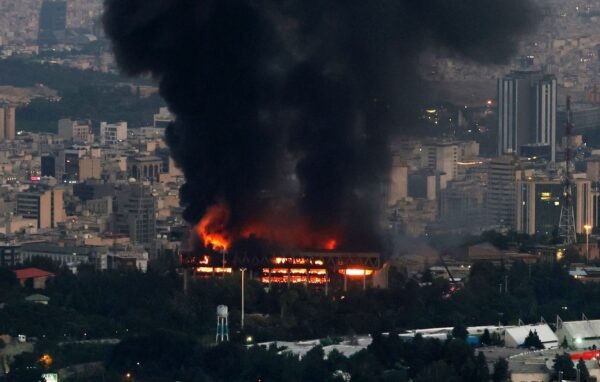As tensions between Iran and Israel reach a critical level, the consequences will not be limited to the battlefield. Four scenarios are emerging, each carrying major geopolitical and financial upheavals. Each trajectory corresponds to a shockwave on energy markets, precious metals, currencies, and global stock exchanges.
1. Fall of the Iranian regime and chaotic drift
In this scenario, the intensity of Israeli strikes leads to the rapid disintegration of Iranian power. The military and political command structure is neutralized. This power vacuum favors the emergence of radical Shiite militias in the Shiite corridor from Lebanon to Afghanistan. A Shiite-colored “Daesh 2.0” emerges, plunging the region into chaos similar to post-Saddam Iraq.
Economic consequences:
– Oil: prices drop to $50 per barrel due to the massive release of Iranian stocks via Turkey and Iraqi Kurdistan.
– Gold: temporary decrease in safe-haven demand before a rise due to chronic instability.
– Dollar: temporary strengthening against emerging currencies, then volatility due to persistent geopolitical risks.
– Stock exchanges: short-term increase in American indices in response to energy price relaxation, but caution on emerging markets.
2. Ceasefire under American pressure and political transition in Israel
Surprised by the effectiveness of Iranian counter-strikes, and under diplomatic pressure from Donald Trump in campaign mode, Israel agrees to a ceasefire. The Israeli public, shocked by human and material losses, pushes for early elections. The center-right and left return to power; Ehud Barak, an experienced military figure, is recalled to restore stability.
Economic consequences:
– Oil: prices fluctuate between $64 and $70 in a context of caution but without major supply disruptions.
– Gold: consolidation around $2,300, with markets integrating a temporary de-escalation.
– Dollar: weakened by uncertainties about US foreign policy, and possible monetary easing.
– Wall Street: technical rebound of indices, notably Nasdaq, driven by tech companies benefiting from regional stability.
3. Expanded regional conflict and paralysis of maritime routes
The conflict expands: Israel receives support from its allies in a prolonged campaign against a resilient Iran. Tehran closes the Strait of Hormuz, through which 30% of the world’s oil transits. The Houthis simultaneously block the Red Sea and the Bab el-Mandeb Strait, threatening exchanges between Asia and Europe. Panic sets in.
Economic consequences:
– Oil: spikes to $150, fueled by fears of scarcity and a rush on futures contracts.
– Gold: soars beyond $2,500, becoming the ultimate safe haven once again.
– Dollar: regains strength as a safe haven currency, at the expense of European and Asian currencies.
– Financial markets: brutal correction of stocks worldwide; the S&P 500 enters bear market territory; the VIX (“fear index”) surpasses levels seen during Covid-19.
4. Apocalyptic scenario: nuclear conflict and global tipping point
In a final escalation, Israel uses a tactical nuclear weapon on strategic Iranian installations. Pakistan, a religious ally of Iran, reacts by launching ballistic missiles. The US and NATO intervene, while China and Russia, out of strategic solidarity, announce their diplomatic and military engagement alongside Tehran.
Economic consequences:
– Oil: surpasses $200, reaching unprecedented levels. Strategic reserves are urgently tapped.
– Gold: crosses the symbolic threshold of $3,000, fear overriding all rationality.
– Dollar: extreme volatility; investors seek refuge in real assets.
– Stock exchanges: widespread collapse. On Wall Street, automated trading circuits are interrupted. The VIX reaches a historic record. The Dow Jones loses 30% in a week. European and Asian stock exchanges temporarily suspend trading. Crypto assets, paradoxically, become alternative refuges despite their instability.
In all scenarios, a war with a high potential for global destabilization
Each of these scenarios shows that the conflict between Israel and Iran, far beyond its regional dimensions, is likely to trigger a systemic shockwave on the global economy. Oil, gold, the dollar, and stock exchanges are the front lines of this uncertain new order. As tensions continue to escalate, investors and states must integrate the hypothesis of a major geopolitical shock into their strategic anticipations.


